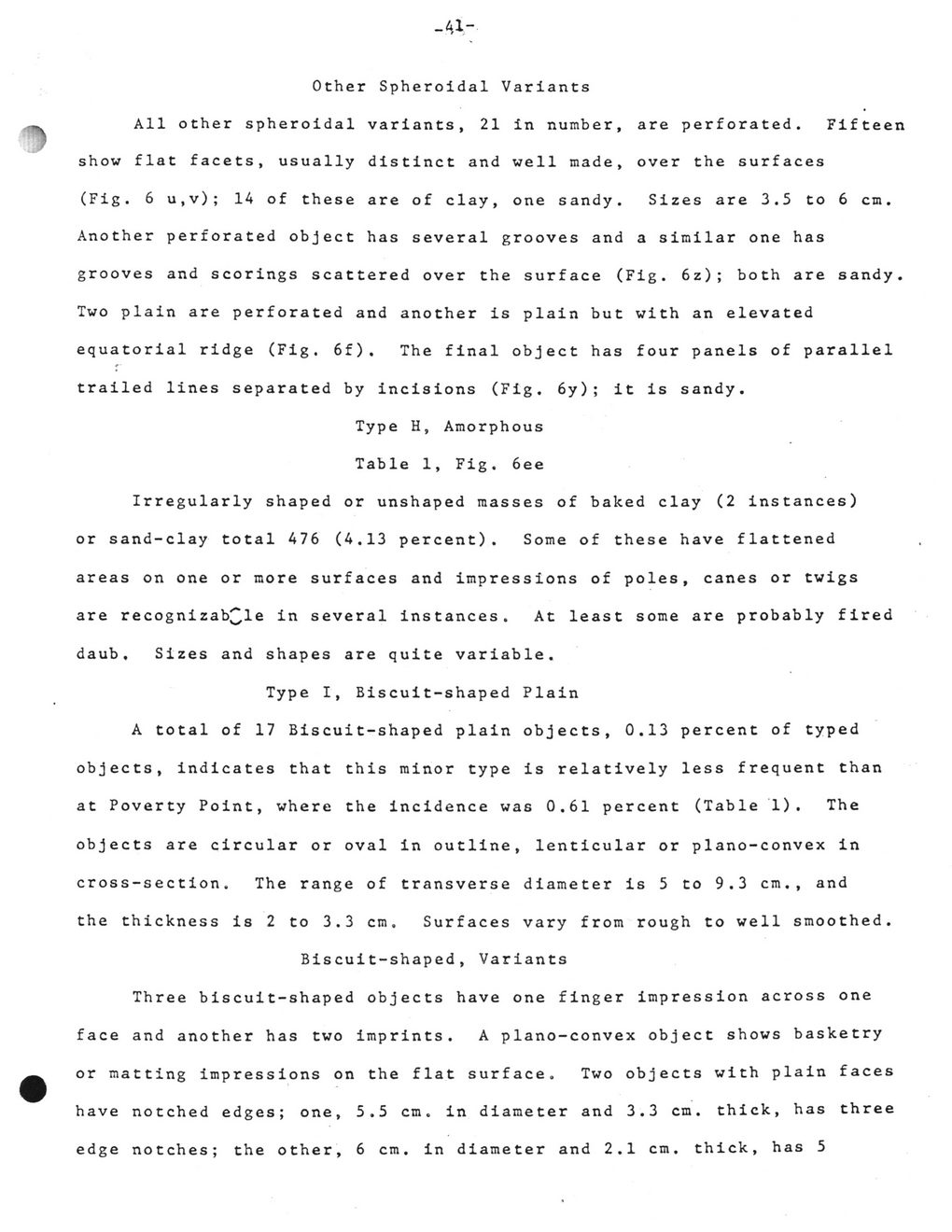This text was obtained via automated optical character recognition.
It has not been edited and may therefore contain several errors.
Other Spheroidal Variants All other spheroidal variants, 21 in number, are perforated. Fifteen show flat facets, usually distinct and well made, over the surfaces (Fig. 6 u,v); 14 of these are of clay, one sandy. Sizes are 3.5 to 6 cm. Another perforated object has several grooves and a similar one has grooves and scorings scattered over the surface (Fig. 6z); both are sandy. Two plain are perforated and another is plain but with an elevated equatorial ridge (Fig. 6f). The final object has four panels of parallel trailed lines separated by incisions (Fig. 6y); it is sandy. Type H, Amorphous Table 1, Fig. 6ee Irregularly shaped or unshaped masses of baked clay (2 instances) or sand-clay total 476 (4.13 percent). Some of these have flattened areas on one or more surfaces and impressions of poles, canes or twigs are recognizab^le in several instances. At least some are probably fired daub. Sizes and shapes are quite variable. Type I, Biscuit-shaped Plain A total of 17 Biscuit-shaped plain objects, 0.13 percent of typed objects, indicates that this minor type is relatively less frequent than at Poverty Point, where the incidence was 0.61 percent (Table 1). The objects are circular or oval in outline, lenticular or plano-convex in cross-section. The range of transverse diameter is 5 to 9.3 cm., and the thickness is 2 to 3.3 cm. Surfaces vary from rough to well smoothed. Biscuit-shaped, Variants Three biscuit-shaped objects have one finger impression across one face and another has two imprints. A plano-convex object shows basketry or matting impressions on the flat surface. Two objects with plain faces have notched edges; one, 5.5 cm. in diameter and 3.3 cm. thick, has three edge notches; the other, 6 cm. in diameter and 2.1 cm. thick, has 5

Walden 052